🇺🇦 All Eyes on Ukraine: Is Russia Going to Invade?
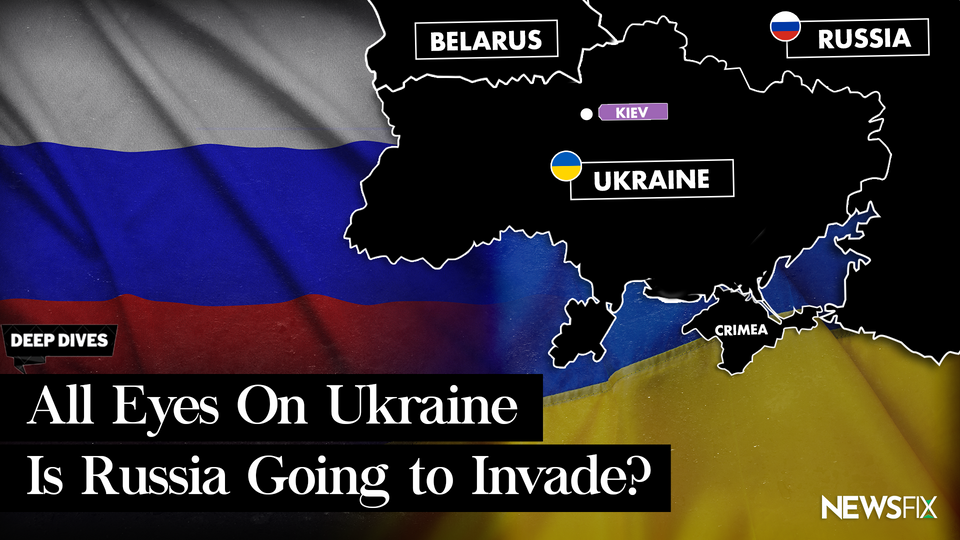
Morning all,
Today marks Unity Day in Ukraine - a day that commemorates the unifying of the east and west of the country back in 1919.
Now, more than a century later, Ukraine's future remains of huge concern to the West - with Russian troops along the border and concerns of an invasion increasing by the day.
If this really is "the greatest security crisis in Europe since the Cold War", shouldn't we know a bit more about it?
There is so much uncertainty, so much at stake, and so much to unravel.
Until Monday,
Your Fixers
WHAT'S THE LATEST?
Since before Christmas, the number of Russian troops along its border with Ukraine has been building.
There are now more than 100,000 troops there, carrying out military exercises as Putin makes improbable demands, and Western leaders appeal for a diplomatic resolution.
What exactly Putin is planning is being widely debated and discussed, with little clarity from Moscow, and no sign of a breakthrough in talks. One thing that is clear - Western leaders think the likelihood of war "has increased considerably in the last week".
STATS ABOUT UKRAINE
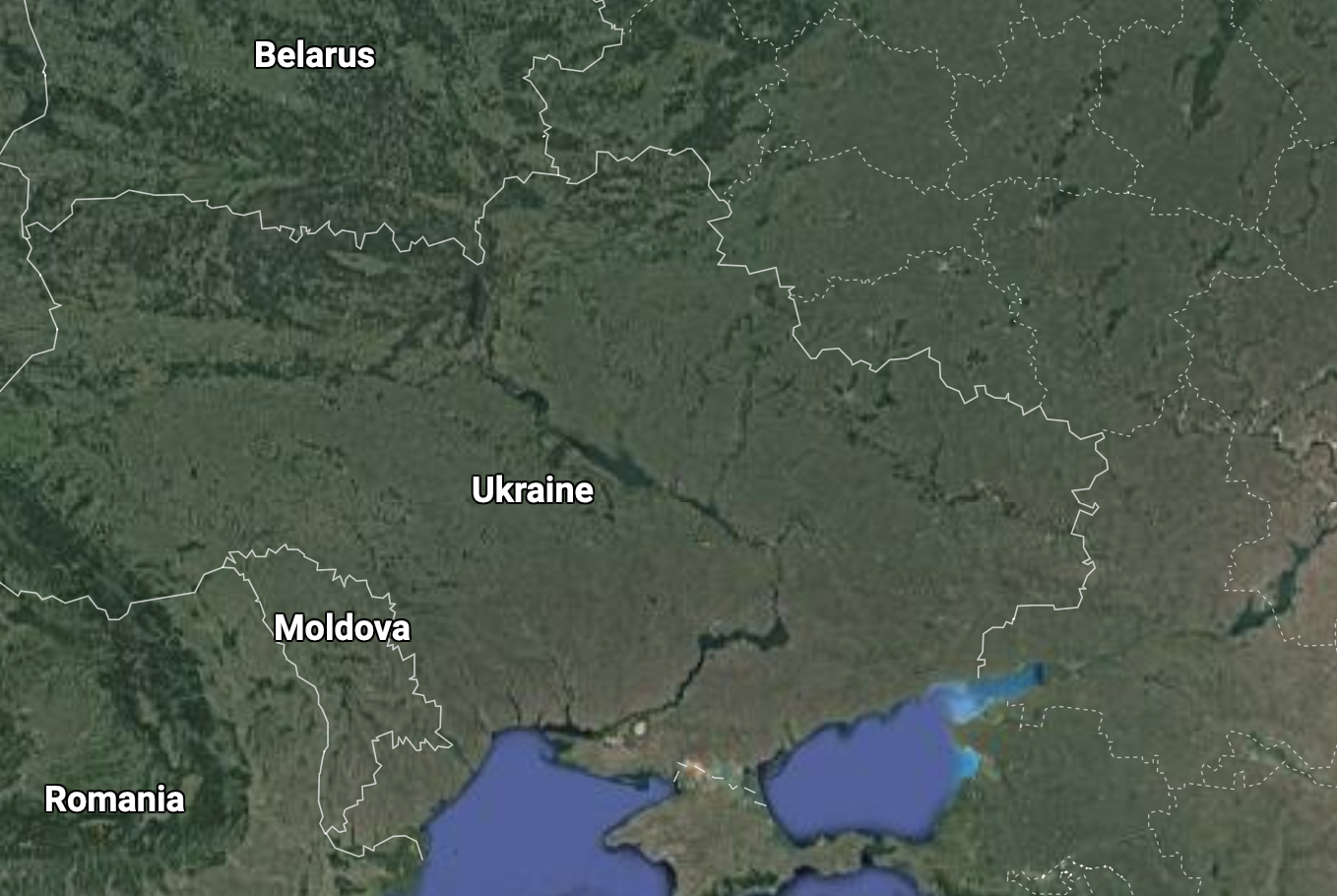
It's important to note that cultural ties between Russia and Ukraine go back centuries, with Ukraine's capital Kiev often described as "the mother of Russian cities".
President Putin even described Russians and Ukrainians as "one people", in an essay he wrote last July.
Today, Ukraine has a population of close to 44 million people, with roughly eight million of them considered ethnic Russians. Most of those who are considered ethnic Russians are located in the south and east of the country.
Ukraine borders seven countries - Russia, Belarus, Poland, Slovakia, Hungary, Romania and Moldova- and has the Black Sea to the south.
The capital Kiev is less than 100 kilometres from Russia's closest ally in Europe, Belarus.
Ukraine is the largest country in Europe, excluding Russia.
Ukrainian is the language spoken the most in the country, but many are bilingual and language has repeatedly been quite a sensitive topic.
So sensitive in fact, in 2012 Ukraine's president at the time, Viktor Yanukovych, signed a law to appeal to his base, allowing any city where 10% or more of the population spoke Russian to adopt it as a second official language.
The map below is from a 2014 Forbes article, but provides helpful insight into where Russian is spoken as a native language.
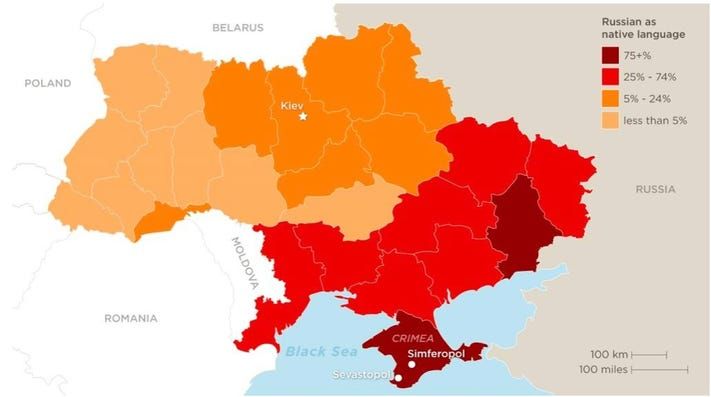
Then, below is a map of the current dynamics at play in Ukraine.
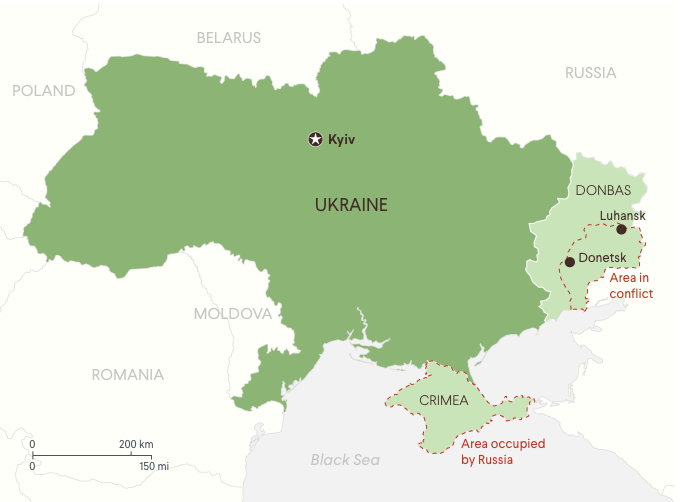
THE COLLAPSE OF THE SOVIET UNION
Okay, let's go back a bit.
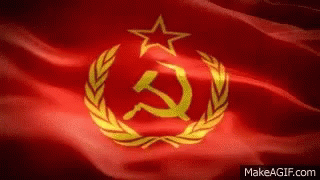
Ukraine was a member of the Soviet Union (USSR) between 1922 and its collapse in 1991.
The country declared its independence in August 1991, which was ratified by a referendum vote on December 1 that same year. In this referendum, 90% of Ukraine's population voted in favour of independence.
Prior to its collapse, The Soviet Union was "one of the world's most powerful and influential states".
It eventually was made up of 15 republics - Russia, Ukraine, Georgia, Belarus, Moldova, Armenia, Uzbekistan, Azerbaijan, Kazakhstan, Kyrgyzstan, Turkmenistan, Tajikistan, Latvia, Lithuania, and Estonia.
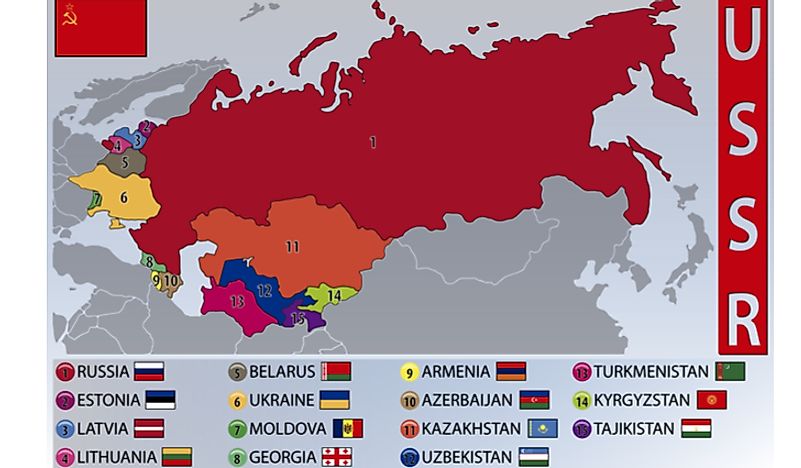
Russia's President Putin has often described the collapse of the Soviet Union as the "major geopolitical disaster of the century", and is no fan of Mikhail Gorbachev, the Russian president who oversaw the collapse.
In a sign of nostalgia, a study from September 2021 showed nearly half (49%) of Russians "would prefer the Soviet political system".
Anyway, following Ukraine's independence Russia maintained a significant influence over the country - with most of Ukraine's exports going to Russia, and a dependence on Russian gas continuing.
“The story of contemporary Ukraine is largely the story of its attempts to define a new future for itself in Europe and Russia’s attempts to obstruct this new direction” - Chatham House analysis
UKRAINE'S POLITICS
An interesting way to get to the heart of that battle for Ukraine between east and west, is to talk a bit about Viktor Yanukovych.
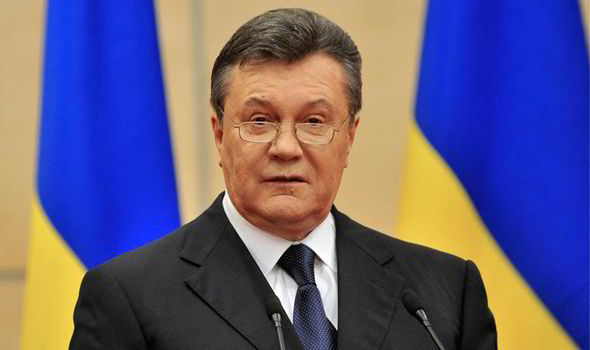
Yanukovych has the distinction of being ousted as president, twice.
Back in 2004, Yanukovych was prime minister and was Putin's favourite to win the presidential election. His opponent was another Viktor, Viktor Yushchenko.
During the race, Yushchenko was poisoned. Russia was widely accused of being responsible.
In the 2004 election, Putin's choice Viktor Yanukovych was declared the winner. However, after mass protests that became known as the Orange Revolution, Yanukovych was ousted and the election was deemed fraudulent.
Viktor Yushchenko, who survived the poisoning but was badly disfigured, became president.
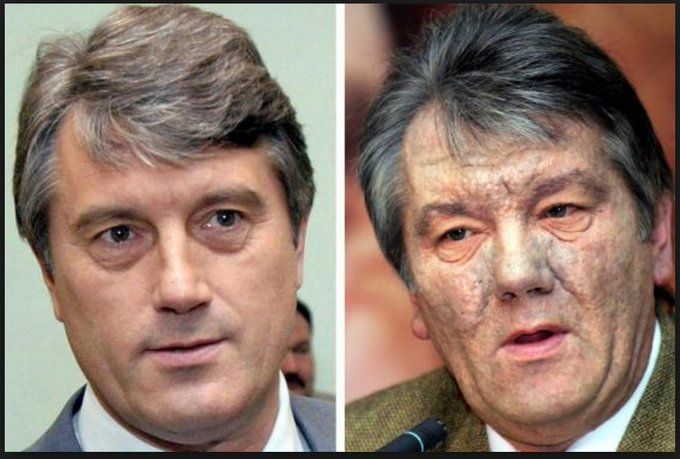
Back to Yanukovych - he rebuilt his political career and was voted in as president in 2010. As mentioned above in the language section, Yanukovych's strongest base of supporters came from mostly the south and east of the country, where most felt strong ties to Russia.
However, in what BBC News pointed out as a "pointed" move, Yanukovych decided to make his first trip as president to Brussels rather than Moscow, straining his relationship with Putin.
TURNING WEST
Back in November 2013, Yanukovych came incredibly close to signing an historic trade deal with the European Union.
The trade pact was said to have been "years in the making" and would have moved Ukraine further out of Russia's orbit. It was abruptly ruled out, and after Putin and Yanukovych held a secret meeting, Ukraine's government said they were instead going to begin "renewed dialogue" with the Kremlin in Moscow.
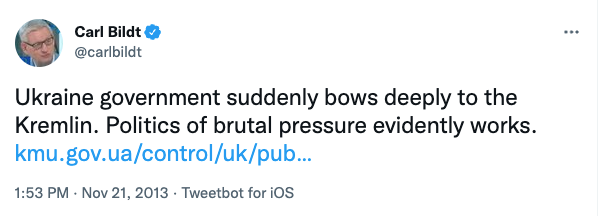
This turn to Moscow sparked a wave of protests among pro-Europeans in Ukraine, and months of violence between Ukrainian forces and pro-Russian separatists in the east of the country.
Yanukovych was ultimately ousted - for the second time - and by February 2014 had fled the country with the help of Putin.
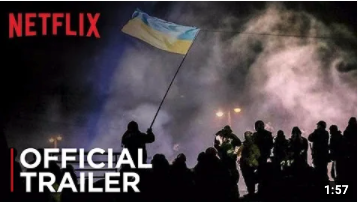
As journalist Tim Marshall noted, after Yanukovych fled, Ukraine's new government became a mix of pro-western and pro-fascist figures. They expressed a desire to remove Russian as an official language in Ukraine.
Putin, feeling he had no choice in the matter, annexed the Crimean peninsula in 2014.
CRIMEA
“It is a riddle wrapped in a mystery inside an enigma, but perhaps there is a key. That key is Russian national interest.” - Sir Winston Churchill talking about Russia in 1939
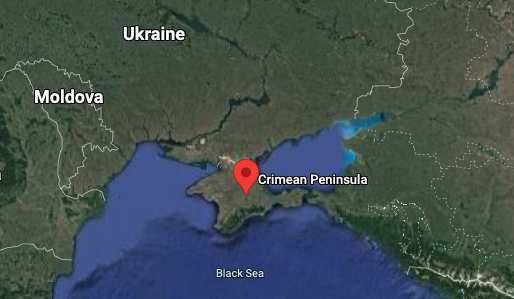
Crimea is a peninsula north of the Black Sea - roughly the size of Belgium - and more than 600km from Ukraine's capital city, Kiev.
It was part of Russia for two centuries, but was transferred to Ukraine in 1954 by then Soviet leader Nikita Khrushchev. It was given as a gift, "in honour of the 300th anniversary of Ukraine's merger with Tsarist Russia".
At the time, the view Khrushchev had was that the Soviet Union would continue forever, and thus Moscow would always have control.
While it is widely accepted a majority of Crimea's population are ethnic Russians, Moscow has been accused of "reshaping demographics" to further suit its narrative.
A 2001 census in Ukraine showed about 60% of Crimea's population were ethnic Russians, with nearly a quarter identifying as Ukrainian.
In March 2014, the pro-Russian leader of Crimea called for Putin's help as unrest continued. Later that same month, 96.7% are believed to have voted via referendum in favour of "leaving Ukraine" and being annexed by Russia.
"The referendum on Crimea’s status was executed under Russian military occupation and, therefore, cannot be viewed as legal and binding." - The view of the Warsaw Institute
The annexation was widely condemned, broke international law, and has been described as "the most serious breach of European borders since the Second World War".
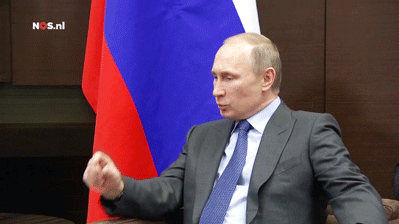
"Russia found itself in a position it could not retreat from. If you compress the spring all the way to its limit, it will snap back hard. You must always remember this." - President Putin speaking about the annexation
Though it is important to note the Russian government - the Kremlin - has a vague law in place to protect ethnic Russians in neighbouring countries, the annexation was highly strategic for Russia too.
Crimea contains the port of Sevastopol, the only real warm-water port Russia has access to.
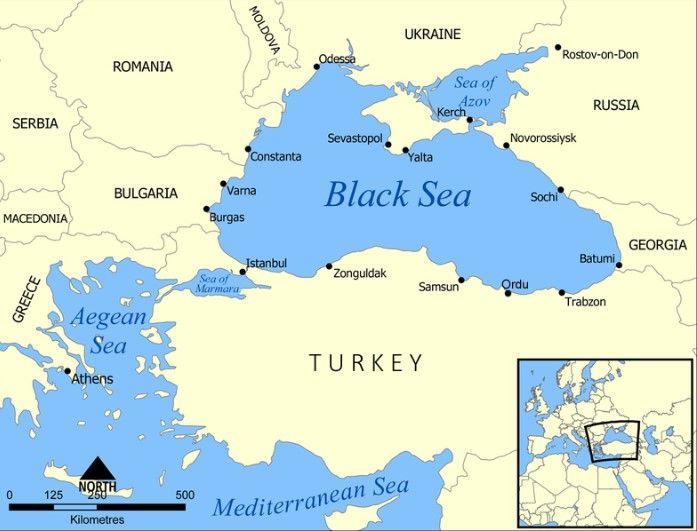
THE NATO ANGLE
A lot of the current rhetoric is centred around NATO - the North Atlantic Treaty Organization.
NATO was established in 1949 by the US, Canada and a number of countries in western Europe, with a main goal of countering Soviet aggression. One of the key things to know about NATO, is that they consider an attack on one member to be an attack on all.
Worth noting: The first time that principle was ever used was in the aftermath of the 9/11 attacks.
Following the collapse of the Soviet Union, Russian authorities insist they were given assurances that no countries near their border would be permitted to join NATO. US officials and NATO deny those assurances were given.
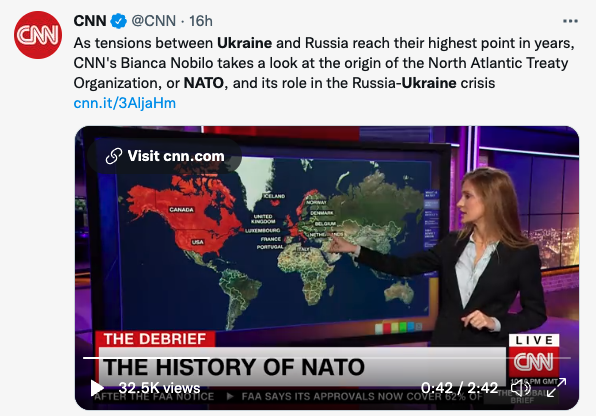
In 1997, Russia's President Yeltsin reluctantly signed an agreement with President Clinton, "to expand the NATO military alliance to include Moscow's former satellites in Central Europe".
At the time, Russia had requested a specific agreement on how many NATO troops could be on the ground in new NATO countries. NATO refused to agree on a limit, but did commit to not deploy nuclear weapons or storage sites in any new member states.
Within two years of that, the Czech Republic, Hungary, and Poland had become members of NATO.
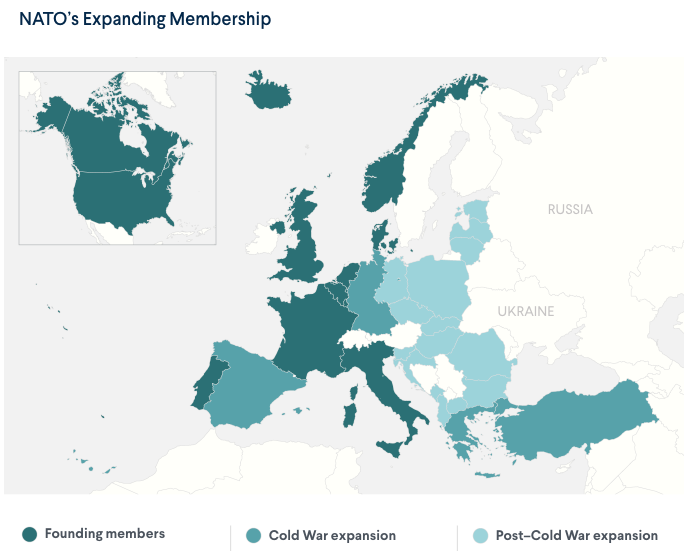
As you can see above, since the collapse of the Soviet Union, NATO has made considerable moves east, accepting the membership of a number of countries close to Russia.
For context, back in 1955 The Warsaw Pact was established by the Soviet Union - a defence treaty including Albania, Bulgaria, Czechoslovokia, East Germany, Hungary, Poland and Romania.
By 2004 - less than 15 years after the collapse of the Soviet Union - all of those states had looked to the west, and were either a member of NATO or the European Union.
In the early 2000s, NATO expressed a future desire for Ukraine to become a member, and the goal is currently written into Ukraine's constitution.
This is a clear red line for Putin, who is now demanding NATO give commitment that Ukraine will never be permitted to join, and also wants the removal of troops and weapons in NATO's member states that joined after 1997.
"Many of these [Russian] demands are so extravagant and so detrimental to Europe's security that they may really be an ultimatum drafted to be rejected, creating a pretext for another invasion of Ukraine." - The Economist.
What is also important to note is that while NATO do not want to shut the door completely on Ukrainian membership one day, the idea that there was an imminent possibility of the country joining the alliance is not true.
Georgia and Moldova are both in similar positions.
To join NATO, all members must vote unanimously in favour. When it comes to Ukraine, France and Germany have expressed opposition to this in the past.
For anyone wondering about Russian perspective on this, it might help to look back at history. Russia was attacked from the west a number of times in the last 500 years.
- By the Poles in 1605
- By the Swedes under Charles XII in 1708
- By the French under Napoleon in 1812
- By the Germans twice in WWI and WWII
"If you count from Napoleon’s invasion of 1812, but this time include the Crimean War of 1853-6 and the two world wars up to 1945, then the Russians were fighting on average in or around the North European Plain once every thirty-three years." - Context from the book Prisoners of Geography
As each day passed this week, the sense of concern amongst Western leaders grew.
Many voices are now saying an invasion of some sort is becoming more of an expectation by the day, but it remains to be seen what exactly might happen.
The Russian movement of field hospitals and ammunition stockpiles, along with troops and tanks, does little to quell concerns.
Doubts over the certainty of a clear and united response from Western allies to Ukraine have also added to the sense of unease.
If Putin were to mobilise troops to cross the border into Ukraine, he has to decide relatively soon.
As David Sanger from The New York Times pointed out, the heavy tanks can only cross into Ukraine when the river is frozen, "so if he's going to make a credible move, he's got a narrow window of February and March".
Of course, it remains to be seen what exactly might happen, and there are so many moving parts to this right now, but we hope some of the context above proves helpful in keeping up to date with this fluid news story.
SOURCES THAT ASSISTED THIS RESEARCH
- Tim Marshall - Prisoner of Geography (a fantastic book)
- The Council on Foreign Relations - Ukraine: Conflict at the Crossroads of Europe and Russia
- The Council on Foreign Relations - Why NATO has become a flash point with Russia in Ukraine
- BBC News - Soviet Union Timeline
- The New York Times - NATO won't let Ukraine join soon. Here's why.
- The Financial Times - How serious is Vladimir Putin about launching a major Ukraine offensive?

